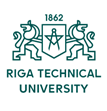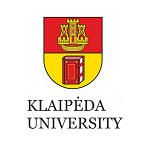COMPARATIVE ANALYSIS OF FINANCING MODELS OF HIGHER EDUCATION
##manager.scheduler.building##: Rezekne Academy of Technologies
##manager.scheduler.room##: 315
Last modified: 20.03.2017
Abstract
The paper aims to present a comparative analysis of financing models of higher education in Europe. Higher education institutions can function properly and ensure the quality of research and studies when there is sufficient funding. Higher education institutions in Europe face a demanding financial situation in which traditional models of funding have been transformed and continue to change gradually. The paper consists of two parts. In the first part the trends in financing higher education in Europe are presented and evaluated. An analysis of the legal regulation and deficiencies of this field are presented. The second part of the paper is devoted to the description of state financing methods of higher education. The main methods of the distribution of the state financing among the institutions of higher education are discussed and the advantages and disadvantages of those methods are evaluated, as well as the experience of other countries in financing higher education. The problematic aspects of the state regulation of financing higher education are analysed by using the methods of document analysis, critical-analytical methods, analysis of scientific literature, historic analysis, systematic analysis, method of the source-content analysis, comparative method.
Keywords
References
Becher, T., Kogan, M. (1992). Process and Structure in Higher Education. London: Routledge.
Canning, M., Godfrey, M., Holzer-Zelazewska, D. (2007) Higher Education Financing in the New EU Member States. Leveling the Playing Field. World Bank Working Paper No. 112. Washington: World Bank. Retrieved from http://www-wds.worldbank.org/external/default/main?menuPK=64187510&pagePK=64193027&piPK=64187937&theSitePK=523679&menuPK=64154159&searchMenuPK=64258545&theSitePK=523679&entityID=000020953_20070822083352&searchMenuPK=64258545&theSitePK=523679.
CEGES. (2007). Rates of Return and Funding Models in Europe. Final report to the Directorate – General for Education and Culture of the European Commission. Valencia: Centre for the Study of Higher Education management.
Commission of the European Communities. (2007). Rates of Return and Funding Models in Europe. Final report to the Directorate – General for Education and Culture of the European Commission. Retrieved from www.ec.europa.eu.
Constructing Knowledge Societies: New Challenges for Tertiary Education. (2002). Washington: The World Bank, 2002. Retrieved from http://siteresources.worldbank.org/TERTIARYEDUCATION/Resources/Documents/Constructing-Knowledge-Societies/ConstructingKnowledgeSocieties.pdf.
Davies, J., Weko, T., Kim, L., Thulstrup, E. (2009). Finland. OECD Reviews of Tertiary Education. Retrieved from http://www.oecd.org/edu/skills-beyond-school/37474463.pdf.
Davies, J., Weko, T., Kim, L., Thulstrup, E. (2009). OECD Reviews of Tertiary Education. Finland. OECD.
Department for Education and Skills. (2003) The Future of Higher Education. Retrieved from http://webarchive.nationalarchives.gov.uk/20100210151716/dcsf.gov.uk/hegateway/uploads/white%20pape.pdf.
Dill, D. Teixeira, P. (2000). Program diversity in higher education: an economic perspective, Higher Education Policy, 13, 99-118. http://dx.doi.org/10.1016/S0952-8733(99)00026-4
Douglass, J.A. (2005). The dynamics of massification and differentiation: A comparative look at higher education systems in the United Kingdom and California, Higher Education Management and Policy. 16(3), 9-35. http://dx.doi.org/10.1787/hemp-v16-art21-en.
Edirisooriya, G. (2003). State Funding of Higher Education: A New Formula. Higher Education Policy, 16, 121-133. doi:10.1057/palgrave.hep.8300006.
Estermann, T., Nokkala, T., Steinel M. (2011). University Autonomy in Europe II. The Scorecard. European University Association.
Estremann, T., Nokkala, T. (2009). University Autonomy in Europe I. Brussels: European University Association.
Eurostat. (2012). Public expenditure on tertiary education as a share of GDP. Retrieved from http://ec.europa.eu/eurostat/statistics-explained/index.php/File:Public_expenditure_on_tertiary_education_as_a_share_of_GDP,_2012_(%C2%B9)_(%25)_ET15.png.
Eurostat. (2016) Educational Expenditure Statistics. Retrieved from http://ec.europa.eu/eurostat/statistics-explained/index.php/Educational_expenditure_statistics#Overall_educational_expenditure.
Eurydyce (2017). Finland. Higher Education. 2017. Retrieved from https://webgate.ec.europa.eu/fpfis/mwikis/eurydice/index.php/Finland:Higher_Education.
Financially Sustainable Universities: Towards full costing in European universities. (2008). Brussels: European University Association.
Funding Higher Education: a View Across Europe. (2010), Brussels: European Centre for Strategic Management of Universities, 2010.
Lietuvos Respublikos Seimas (2016). Mokslo ir studijų įstatymas (2016 m. birželio 29 d., Nr. XII-2534). Retrieved from TAR.lt.
Lietuvos Respublikos Vyriausybė (2006). Dėl Lietuvos Respublikos valstybės biudžeto lėšų poreikio nustatymo ir jų skyrimo mokslo ir studijų institucijoms metodikos patvirtinimo. (Valstybės žinios, 2006, Nr. 108-4114). Retrieved from TAR.lt.
Liuhanen, A.M. (2005). University evaluations and different evaluation approaches: A Finnish perspective. Tertiary Education and Management, 11, 259-268.
Kasparovsky, H., Wadsack, I. Higher Education in Austria. (2004) Vienna: The Federal Ministry of Education, Science and Culture.
National Center for Education Statistics (2012) Education Expenditures by Country. Retrieved from https://nces.ed.gov/programs/coe/pdf/coe_cmd.pdf
OECD (2017), Spending on tertiary education (indicator). doi: 10.1787/a3523185-en Retrieved from https://data.oecd.org/eduresource/spending-on-tertiary-education.htm
Orr, D. (2005) Can Performance – Based Funding and Quality Assurance Solve State vs Market Conundrum? Higher Education Policy, 18, 31-50. doi:10.1057/palgrave.hep.8300071.
Pranevičienė, B., Pūraitė, A. (2010). The Financing Methods of Higher Education System. Jurisprudence, 4(122), 335-356.
Relchert, S. (2009). Institutional Diversity in European Higher Education. Tensions and challenges for policy makers and institution leaders. Brussels: European University Association, 21-44.
Salmi, J., Hauptman, A.M. (2006) Innovations in Tertiary Education Financing: A Comparative Evaluation of Allocation Mechanisms. Education. Working Paper Series. No. 4. Washington: World Bank. Retrieved from http://siteresources.-worldbank.org/EDUCATION/Resources/278200-1099079877269/5476641099079956815/-Innovations_TertiaryEd_Financing.pdf
Schleicher, A. (2006) Europe‘s university challenge. OECD Observer, 254. Retrieved from http://www.oecdobserver.org/news/fullstory.php/aid/1889/.
Stanfield, J. E. G., (2002). Higher Education New Ideas From Around The World. Konferencijos “Lietuvos aukštasis mokslas: diagnozės ir prognozės” medžiaga. Vilnius: Lietuvos laisvosios rinkos institutas, Žinių ekonomikos forumas, 50-66.
The Bologna Process in Finland. (2005) Turku. Retrieved from http://www.minedu.fi/OPM/Julkaisut/?lang=en.
Universities 2005. Annual Report. (2006). Helsinki: Ministry of Education, 2006. Retrieved from http://www.minedu.fi/export/sites/default/OPM/Julkaisut/2006/liitteet/opm31.pdf?lang=en.
Universities Act 558/2009 (As amended up to 315 /2011). (2011). Unofficial translation. Retrieved from http://www.finlex.fi/en/laki/kaannokset/2009/en20090558.pdf
Woodhall, M. (2007). Funding Higher Education: The Contribution of Economic Thinking to Debate and Policy Development. Education. Working Paper Series. No. 8. Washington: World Bank. Retrieved from http://siteresources.worldbank.org/EDUCATION/Resources/278200-1099079877269/547664-1099079956815/Funding_HigherEd_wps8.pdf.








